In the framework of the exhibition “The Lab” at the ITU Telecom World 2014 from December 7th to 10th in Doha Ars Electronica presents just what innovation and thinking in alternatives can mean in the form of 16 outstanding projects working within this topic in the context of telecommunications.
Type: Exhibition
Duration: 7-10 December 2014
City, Country: Doha, Qatar
Venue: ITU TELECOM WORLD ’14, Doha, Qatar
This is the second year that Ars Electronica is staging a presentation at ITU Telecom World. “The Lab” is being displayed there in an approximately 200-square-meter exhibition space. It’s a collection of innovative projects at the interface of art, technology and society that have been grouped into four thematic clusters: better and fairer coexistence; thinking about and striving to come up with alternatives; design with a (social) message; and the arbitrariness of systems.

The substantive focus of these works is diverse indeed; what they all have in common is an attitude: regarding technology, basically, as a chance. Technological innovation ought to be enlisted into the service of social development, the ongoing effort to make our lives easier, fairer, ecologically more sustainable—in short, better. But mind you, using technology in this way presupposes awareness of the potential risks and negative aspects. After all, technology in and of itself is no panacea. Quite the contrary. Without critical consideration of the facts and circumstances and the development of a corresponding sensibility, the employment of technology will always ultimately backfire because the problems one ends up causing turn out to be more severe than those one was attempting to solve in the first place. And precisely here is where artists come into play. They’re the ones who observe, call into question and cast doubt. They poke around in open wounds. They create symbols, images and narratives that deal with what’s gone awry and how things ought to be. And it just might be that precisely these artistic contributions are also what show us new ways to go. Not by providing us with ready-made concepts or answers, but rather by helping us to pose the right questions and to start the necessary discussions. Who knows?
Artworks
Mohammed A. ElRaffie (EG)
CORD

CORD is in the business of science communication. The company’s edutainment offerings provide experience in the construction of robots. In less than an hour, event participants are acquainted with new dimensions of applied physics. Using widely available materials, they build the world’s simplest robots. In the Robotikya Robo-Bug workshop, our immediate everyday surroundings deliver stimulating ideas for the construction of robots. Each two- or three-member crew is given a variety of common, everyday objects. CORD invites participants to go on a journey through the realm of innovation. Following an introduction by the workshop leader, crew members use their objects—things that initially seem unsuitable—to develop a simple mechanism. The participants experience for the first time how inspiring their everyday surrounding can be and how simple it is to use commonplace stuff as components to build something new.
Cecilia Lalatta Costerbosa (IT)
Parametric Hybrid Wall
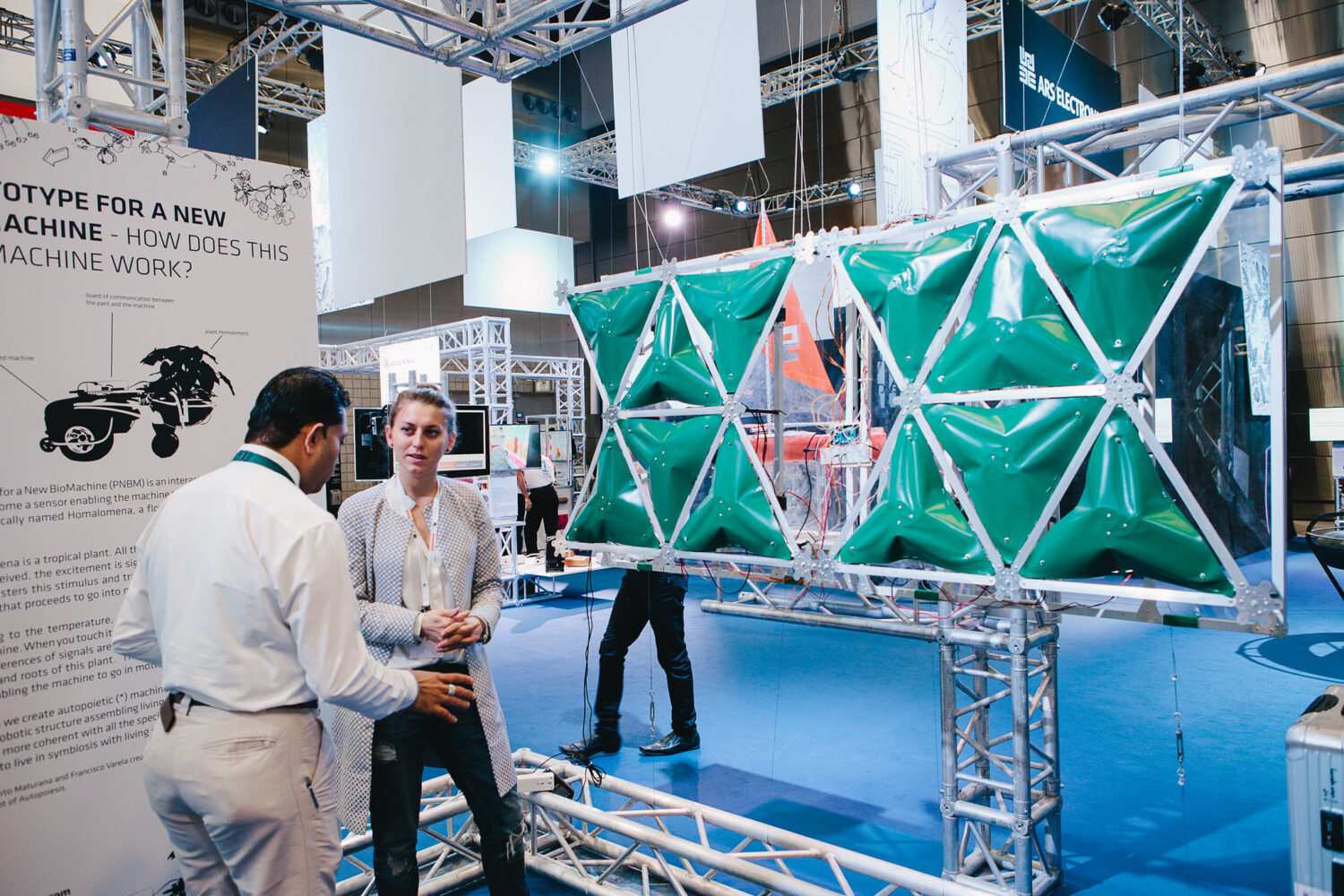
The Parametric Hybrid Wall is a responsive surface, an architecture that can react to diverse stimuli in a context-appropriate way and change its form accordingly. The surface can assume a variety of forms depending on the input delivered by various sensors. It morphs as soon as the stimulus is received. The dynamics of these structures are an upshot of the interaction between the user who activates the sensors and the surface that modifies its form. The Parametric Hybrid Wall is an open source project.
Markus Schmeiduch (AT) / Andrew Spitz (FR) / Ruben van der Vleuten (NL)
BlindMaps
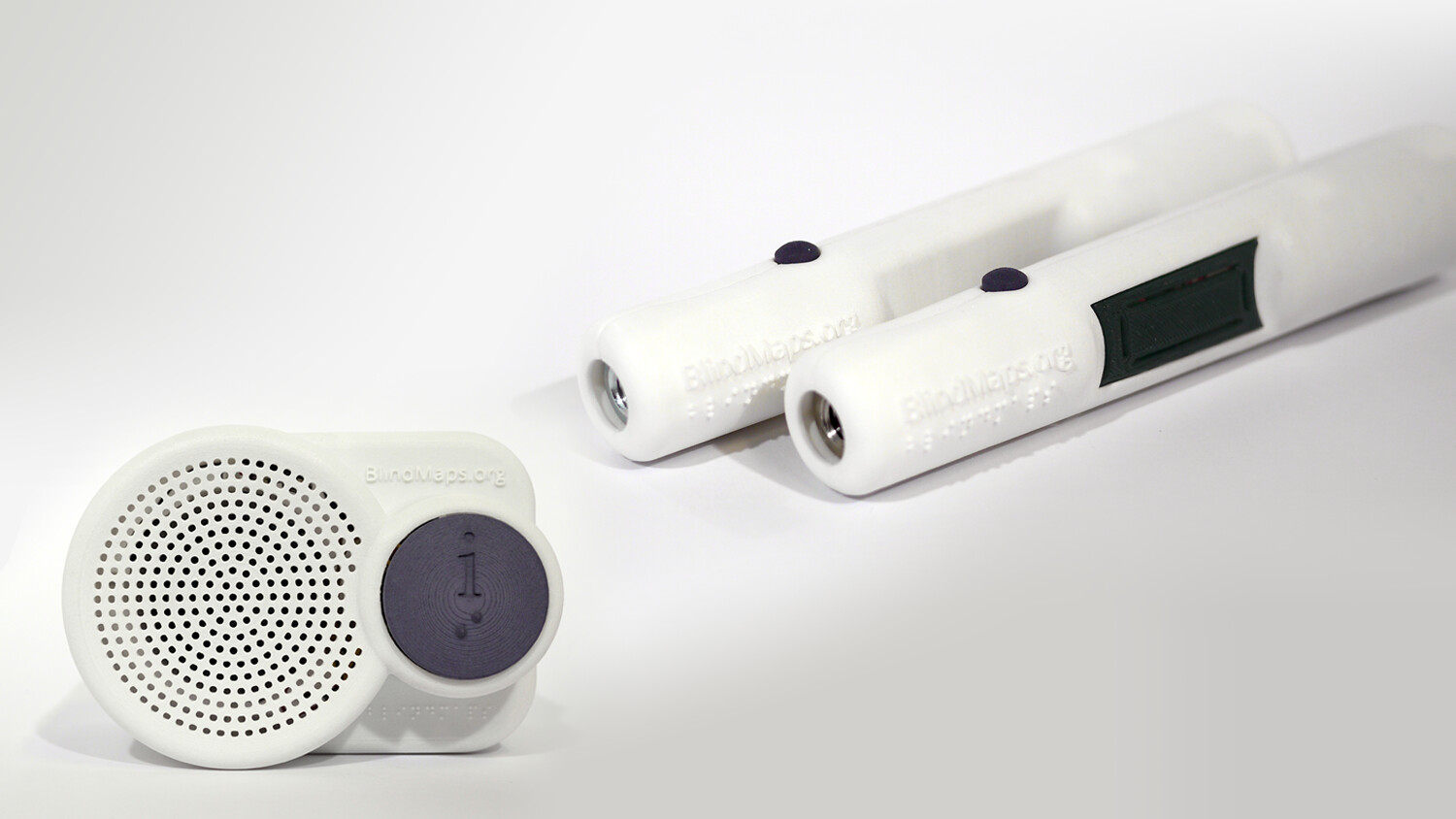
BlindMaps is a moderately priced system that provides navigational aid for blind and visually impaired pedestrians. The aim is to make it easier for these people to get around in big cities and explore them on their own. The system’s approach isn’t based on verbal output; instead, it uses a touchscreen studded with more or less protruding pins and thus slightly resembles Braille writing. The functions are expanded via online maps and smartphones. The developers—who have used open source hardware/software for the most part—have produced a series of simple, low-cost prototypes with Bluetooth-enabled haptic interfaces that are integrated into the handle of a white cane featuring light signals (like iBeacon). BlindMaps can be copied, modified and upgraded by anyone. www.blindmaps.org
https://www.smeidu.com, https://www.andrew-spitz.com, https://www.rubenvandervleuten.com
Eric Paulos (US)
Energy Parasites

Energy Parasites are handcrafted objects designed to opportunistically harvest small bits of energy across public landscapes. Agnostic to energy origin or ownership, these artifacts redirect their captured energy through a variety of means including expressing it or storing it for later reacquisition and usage. The essential element here is the material aspect of energy. Energy Parasites focus on the usage of energy and the possibilities of reusing it. They simultaneously call into question the ownership of energy and illustrate alternative possibilities of generating energy. A central aspect of this is the redefinition of energy as material, which raises various questions about energy production.
Cesare Griffa (IT)
LillyBot 2.0

LillyBot 2.0 is an automated device to cultivate edible microalgae (Spirulina) that contains all of the amino acids, omega 3 and is a complete protein. A personal microalgae farm is an environmentally friendly way to produce and consume a complete nutritional source that grows rapidly via photosynthesis, fixes nitrogen and gives off oxygen. LillyBot 2.0 consists of an acrylic frame that contains the microalgae solution tank, hydraulic and electronic control systems, and a growing chamber based on the Water Lilly 2.0 system.
Credits: design & technology: cesare griffa with matteo amela, biological support: fotosintetica & microbiologica srl, prototype manufacturing: fablab torino
Massoud Hassani (AF)
Mine Kafon
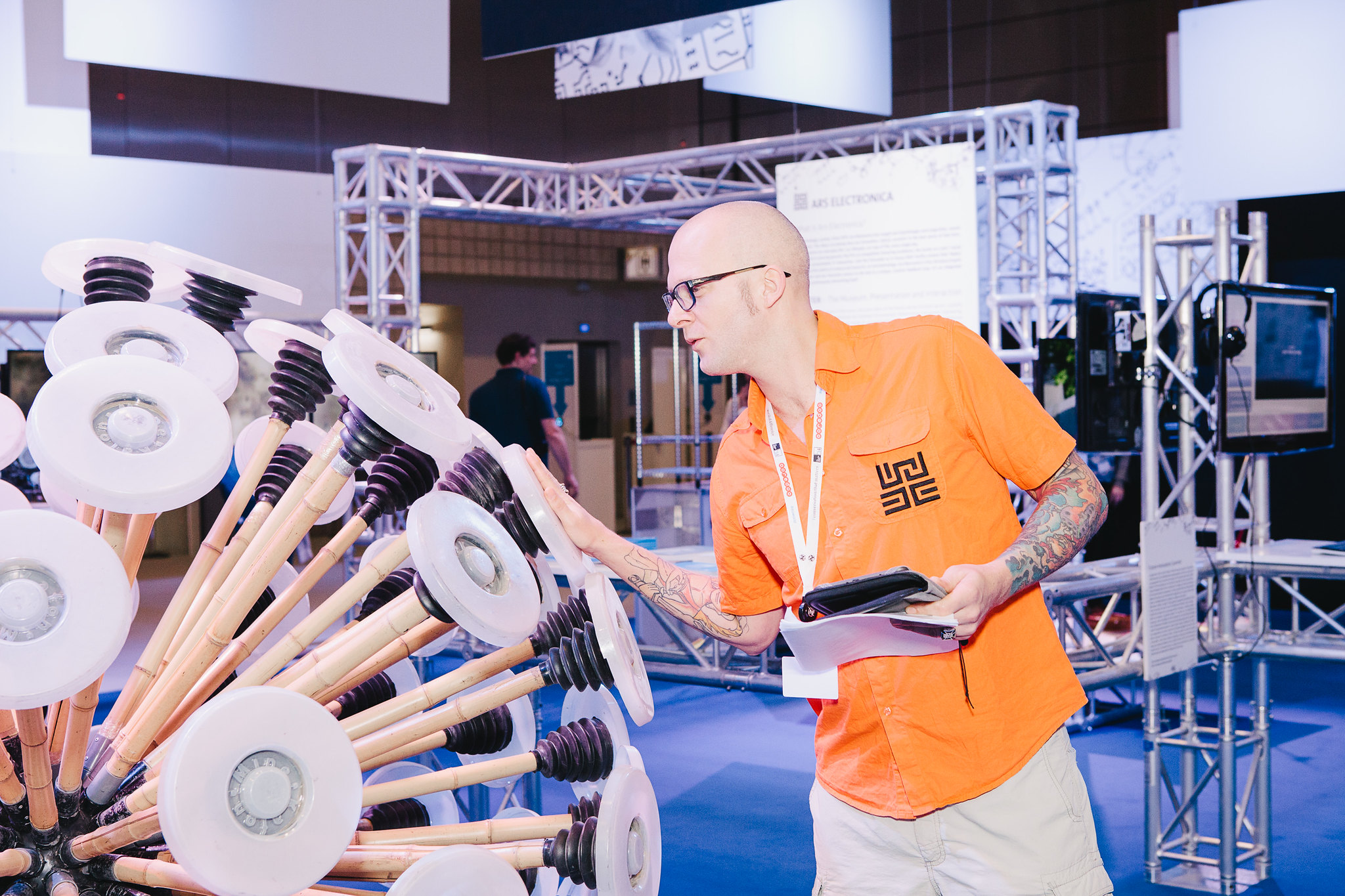
Mine Kafon is a wind-powered device that’s heavy enough to trip landmines as it rolls across the ground. Massoud Hassani drew his inspiration from his childhood in Kabul, where he would play with his younger brother with their homemade, wind-powered toys that would sometimes get blown astray, roll out into the desert and land among landmines where it was too dangerous to retrieve them. Mine Kafon is approximately the same height and weight as an adult male. The device simulates a man walking, and exerts enough pressure to detonate a landmine. Its core is a 17-kilogram iron casing surrounded by dozens of radiating bamboo legs, each of which has a round plastic “foot” at its tip. Inside the casing is a GPS unit that maps where Mine Kafon has been. The data are available in real time and accessible online. Mine Kafon is not only an innovative device to safely detonate landmines; it also focuses attention on the landmine problem and shows that something has to be done about it.
Takehisa Mashimo (JP), Akio Kamisato (JP), Satoshi Shibata (JP)
Moony
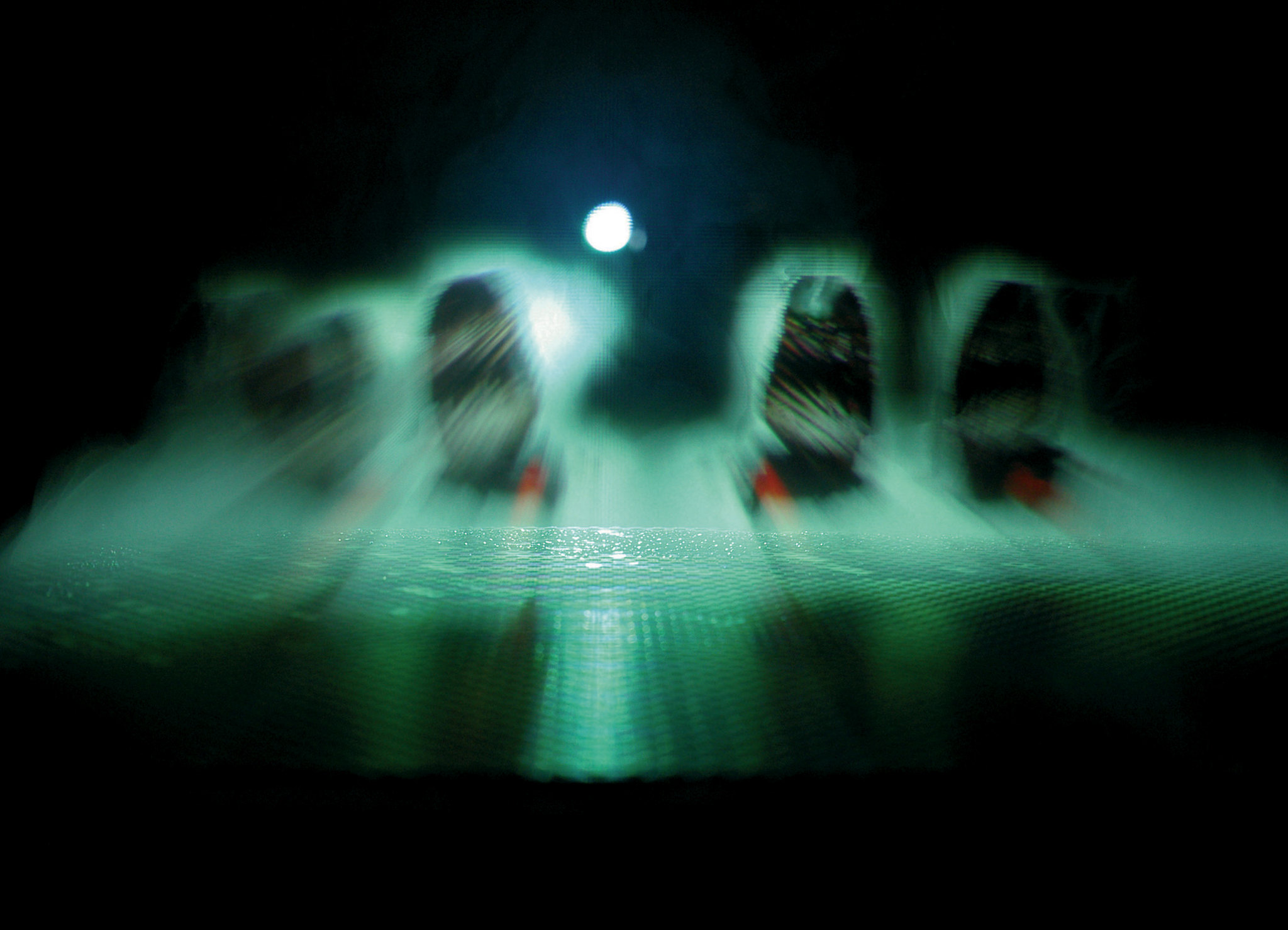
With its projections of interactive images onto a water vapor cloud, Moony shows that virtual likenesses of living creatures can have an even stronger presence than their natural counterparts. The installation engenders a mystical space that, by interlinking real and virtual entities, lets visitors experience a new perception of reality. Moony shows that common, everyday phenomena like poor visibility or the mimesis of butterflies overshadow physical objects, while the power of our imagination and virtual images endow them with greater plasticity.
MID (ES)
Bhoreal
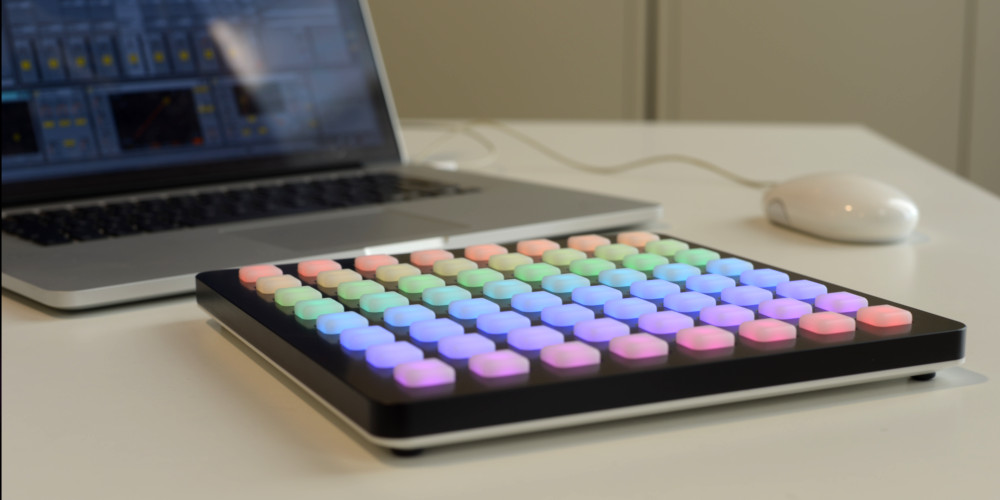
Bhoreal is an open-source interface that enables users to control all kinds of software and hardware. It’s based on the Arduino platform. The surface consists of keys that are backlit with RGB LEDs. Bhoreal can be employed as a sequencer, synthesizer, rhythm box or remote control unit. Among the many other conceivable applications are: to trigger live samples, as an algorithmic and generative controller for mathematical simulations, game board, or LED display. It’s a perfect tool for creation in real time, developed by artists for artists. The Bhoreal controller enables users to surmount constraints imposed by conventional devices. Thanks to its open-source architecture, the tool can be adapted and modified at will.
Phil Ross (US)
Mycotecture Brick Corner

In the early 1990s, Phil Ross began working on a series of sculptural projects based on the cultivation and manipulation of fungal tissue. These works of art consisted of a material made by pulverizing living fungus cells and combining them with a cellulose binder, which served the organism both as a framework and as a source of nutrition. Within about a week, the mixture hardens, since the fungus bonds the tiny framework components to each other. Once such a fungal object has formed, it can be dried, solidified and worked into a wide variety of impressive shapes. Similar to cement and plaster, fungal tissue assumes any form into which it’s applied. In a dried state, it’s a light, stable material. After a while, Phil Ross found that fungal tissue can quickly reach enormous proportions when its living conditions are suitable. This includes the nutrients provided to the organism, as well as the humidity, light and temperatures the tissue is subjected to while it’s developing. Fungi are extremely sensitive to their surroundings; subtle changes can induce the tissue to display a variety of physical characteristics. This ongoing research project has brought forth a series of geometrically determined objects and biotechnologically produced configurations.
Gilberto Esparza (MX)
Nomadic Plants
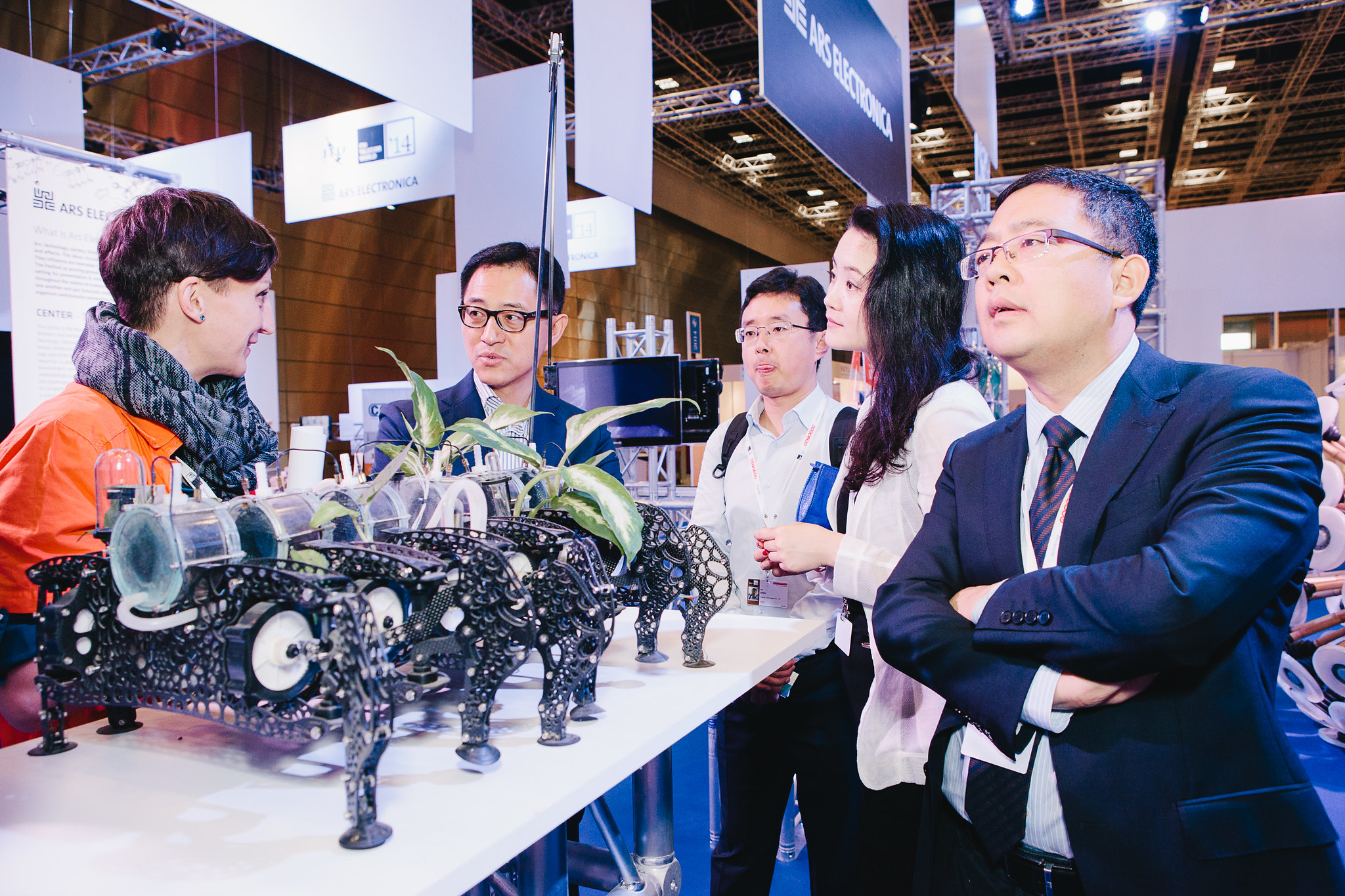
Nomadic Plants is a research project on the treatment of polluted water. Gilberto Esparza’s aim is to improve water quality by transforming waste into nutrients and energy. The main protagonist to make this happen is a robot that acts autonomously and lives in symbiosis with microorganisms and plants. Endowed with the capacity to convert garbage into electricity, oxygen, clean water and nutrients, it’s able to survive on the banks of polluted rivers. This “nomadic factory” transports polluted water to a battery of microbial fuel cells that accelerate the biological decomposition process. This produces clean water for the wetland biotope that is the home of plants and bacteria that provide the electrical current to run the system’s electronics. This cycle controls the ecosystem and keeps it in balance. Photovoltaic cells power the robot’s locomotion apparatus. As soon as the robot has tanked up enough energy, it heads out in search of food. If the water is more polluted, it calls attention to this by making loud noises.
Better Future Factory (NL)
Perpetual Plastic Project
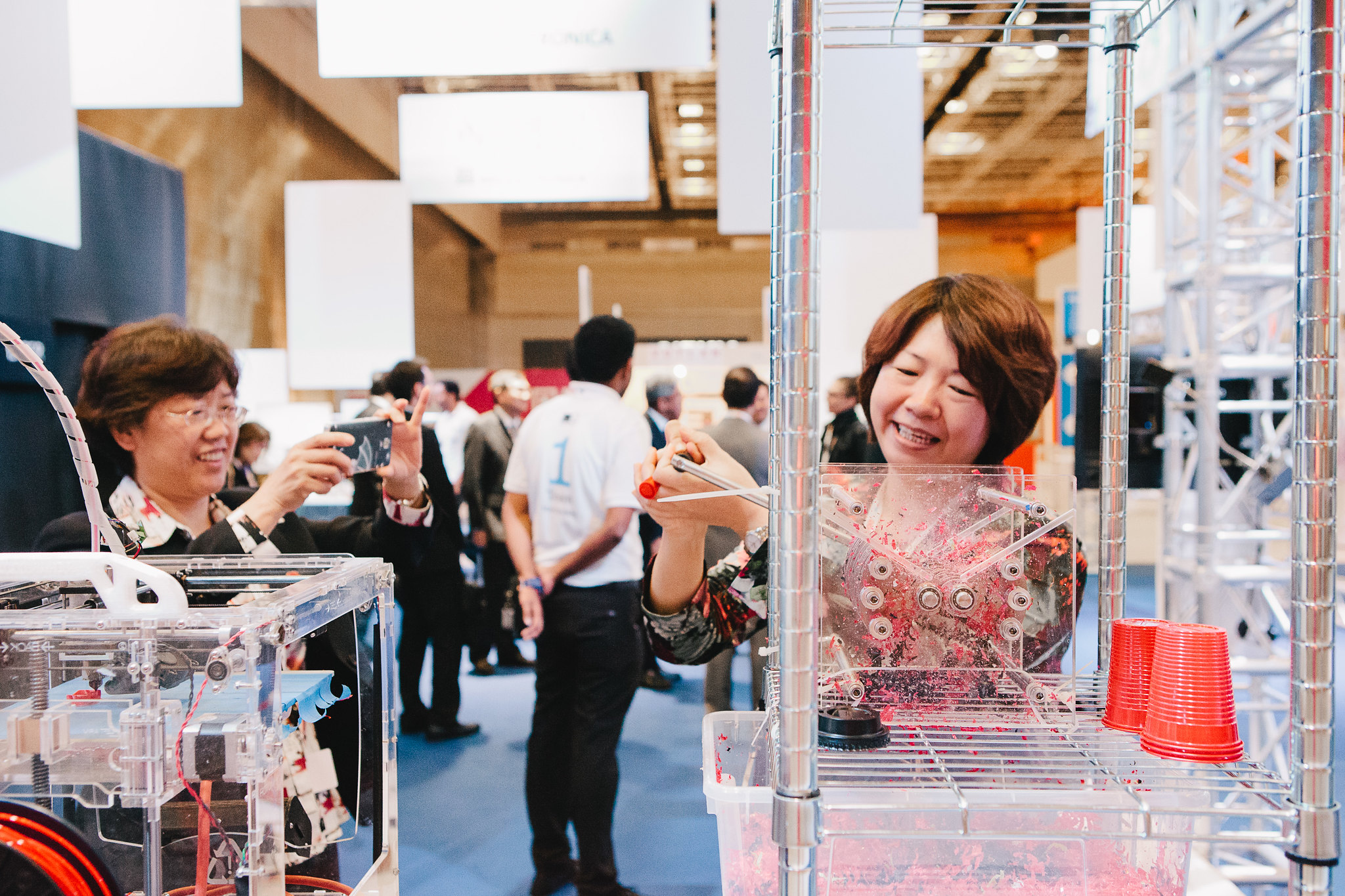
What if you could take plastic garbage and make cool looking accessories out of it? The point of the Perpetual Plastic Project (PPP) is to show that plastic trash actually has a value since you can use a 3-D printer right on site to transform it into a stylish object such as a ring. At events staged by PPP, guests bring along their plastic trash and recycle it themselves with machines that are part of the installation. Thus, PPP changes their attitude towards plastic trash. Coming up with a creative mode of dealing with this material increases people’s esteem for what they had previously deemed worthless garbage. The ultimate mission is to trigger some rethinking about recycling.
Ivan Henriques (BR)
Prototype for a new BioMachine

Brazilian artist Ivan Henriques’ interactive BioMachine (PNBM) explores new channels of communication among human beings, living organisms and machines. It transforms a tropical plant into a sensor. When an installation visitor touches the leaves of this Homalomena, a flowering plant of the Araceae (Arum) family, the entire plant registers this stimulus and transmits an electrical signal to an attached machine that proceeds to go into motion. The creation of this prototype will be followed up by additional research into the development of autonomous symbiotic bio-machines in which plants and mechanical devices literally merge into one unit.
Markus Heinsdorff (DE), Andreas Zeiselmair (DE), Christoph Helf (DE)
Rotor / mobile hydro

Rotor was developed for small businesses, communities, farmers and NGOs in rural regions that have no access to an electric power grid but are located near a river. Rotor is a moderately priced, mobile miniature hydroelectric plant that can provide electricity as a plug-and-play solution with a price-performance ratio that’s tough to beat. Constructed with durability and easy maintenance in mind, it generates low-cost energy from renewable sources and thus also puts in place a precondition for ongoing socioeconomic development—sustainable growth, education/training, health services and telecommunications.
Takeo Saijo (JP)
Project Fumbaro Eastern Japan

Project Fumbaro Eastern Japan (PFEJ) is an autonomous crowdsourcing platform that takes advantage of social networks to efficiently deliver people-to-people aid in an emergency situation. Fumbaro is Japanese for “Hang in there!” The project was initiated by Takeo Saijo in the wake of the 2011 earthquake that devastated the eastern part of the country. Fumbaro constituted a revolutionary way to utilize social networks to match the acute needs of victims with aid that people who wanted to help were ready to provide. It organized 35,000 aid deliveries and furnished more than 3,000 provisional shelters and temporary housing. Plus, Project Fumbaro recruited over 3,000 volunteers for various aid projects such as tutoring children, mobilizing animal rescue teams and helping to compose letters of support. Project Fumbaro Eastern Japan has since developed into Japan’s largest volunteer initiative.
Cesar Harada (FR)
Protei
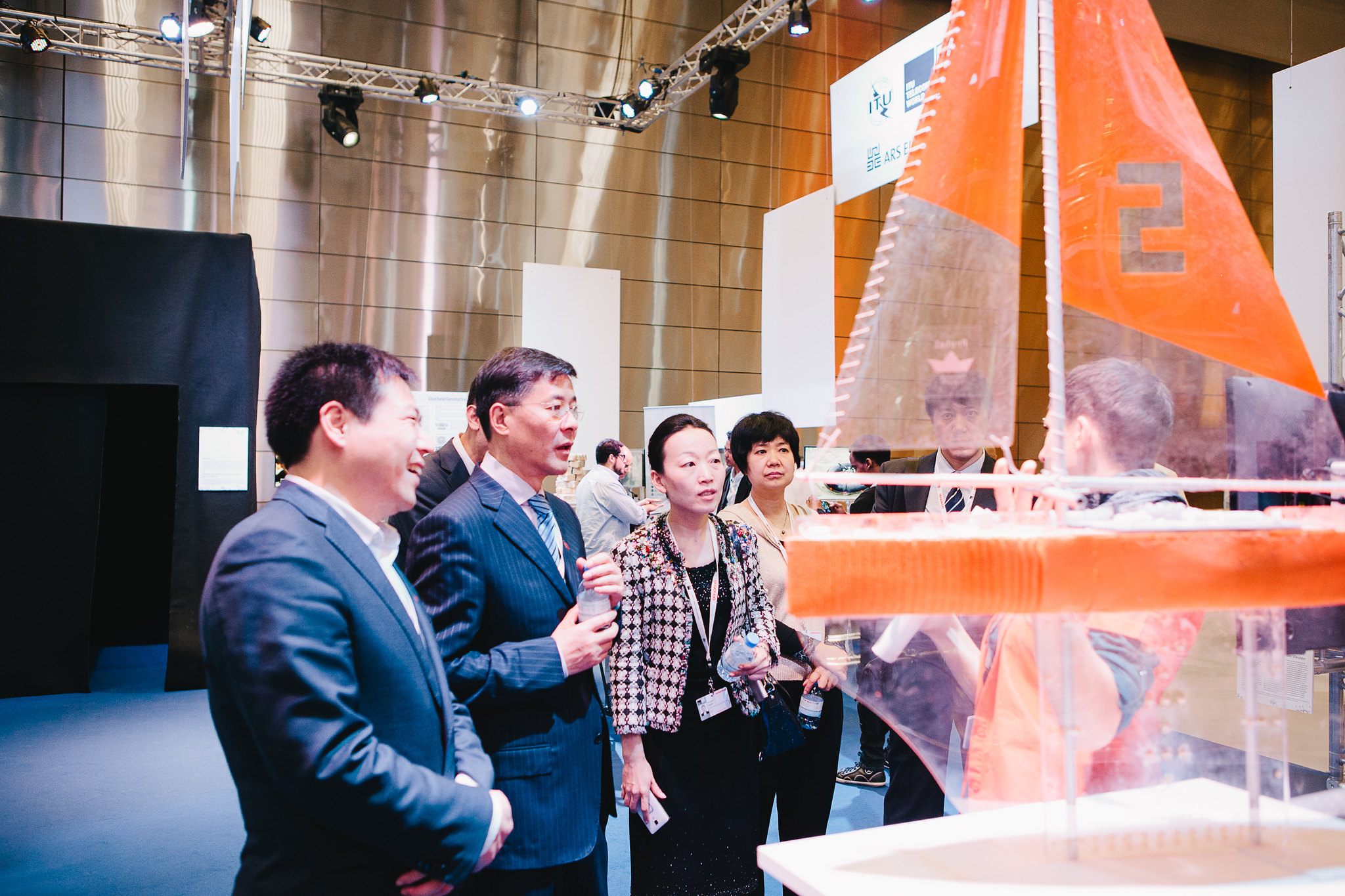
Protei is a fleet of unmanned robotic sailboats featuring an innovative design that enables them to tack against the wind to effectively combat marine pollution. The project was initiated by TED Senior Fellow Cesar Harada and is being carried out through interdisciplinary cooperation among artists, designers and scientists. The aim is to develop a self-righting, inflatable, indestructible, reasonably-priced and easily manufactured vehicle that can be deployed quickly in a crisis. Protei makes use of currently existing technologies. Its focus is on the Protei_Oil_Spill, a clean-up vehicle currently in development. Since this is an open source project, it’s conceivable that Portei could also be used for other purposes such as eliminating the huge concentration of plastic waste in a portion of the North Pacific and cleaning up bodies of water polluted by heavy metals and toxic substances. The process of dealing with open hardware has also led to the emergence of a community whose mission is to see to it that this technology is deployed in the service of the environment.
Rolf Pfeifer (CH)
Roboy
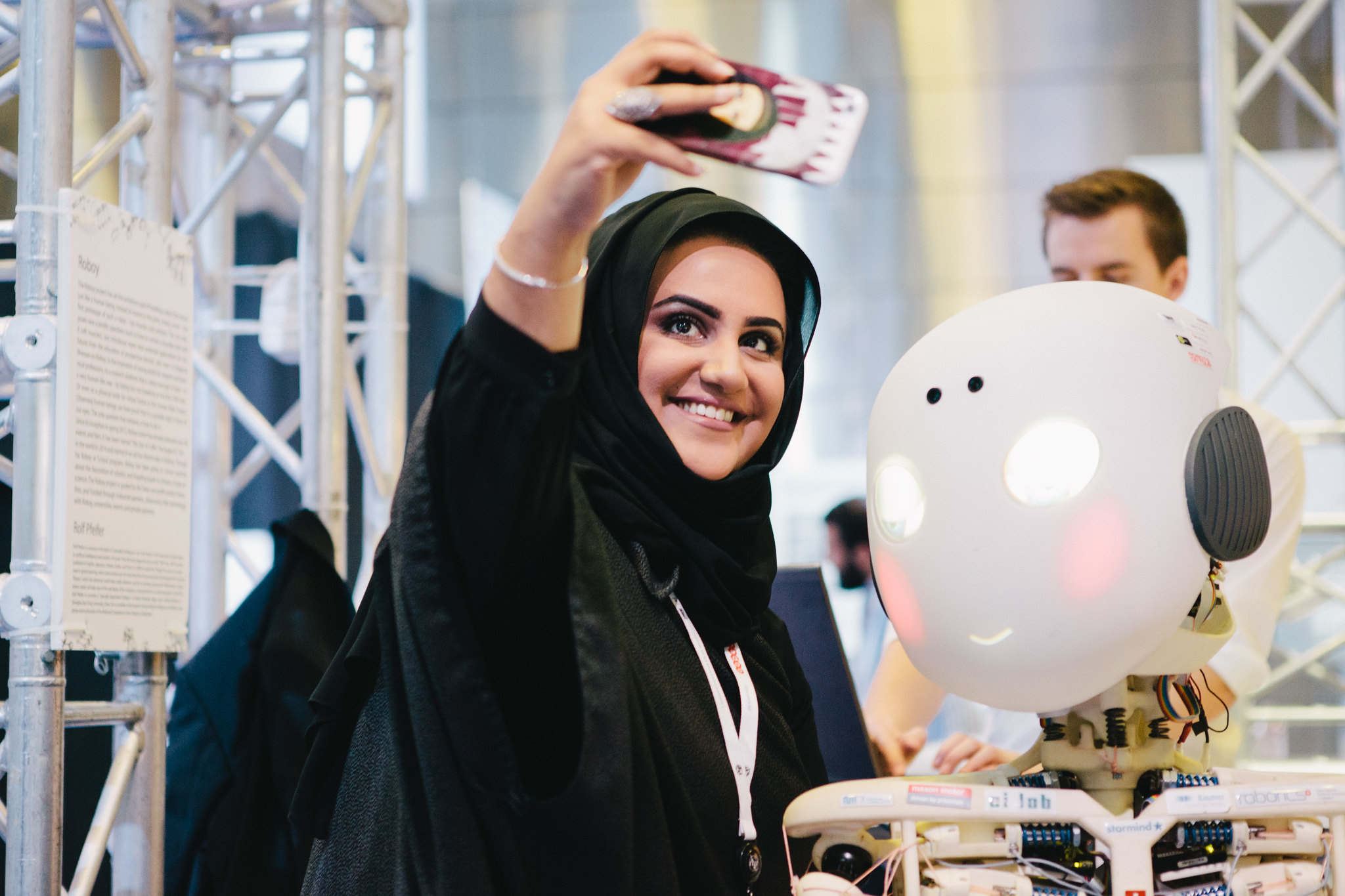
The Roboy Project is pursuing the ambitious goal of building a robot that moves like a human being. Roboy Junior, the initial prototype, gets around without the help of motors; instead, it uses the muscles and tendons in its joints. This not only raises new questions for scientists to consider; it also opens up potential applications with great future promise. For instance, Roboy could serve as a test dummy for treatment by medical interns and residents, and could inspire young people to get interesting in scientific research or to decide in favor of a technical career. Since its debut in 2013, Roboy Junior has appeared at more than 40 events, been written up as the “star of CeBit” and even played a role in a play in Beijing. As part of a specially developed program, Roboy also visits schools to inspire students and get them interested in robotics. The Roboy Project is administered by Devanthro, a Swiss non-profit society, with financing provided by industrial associates and private sponsors.


